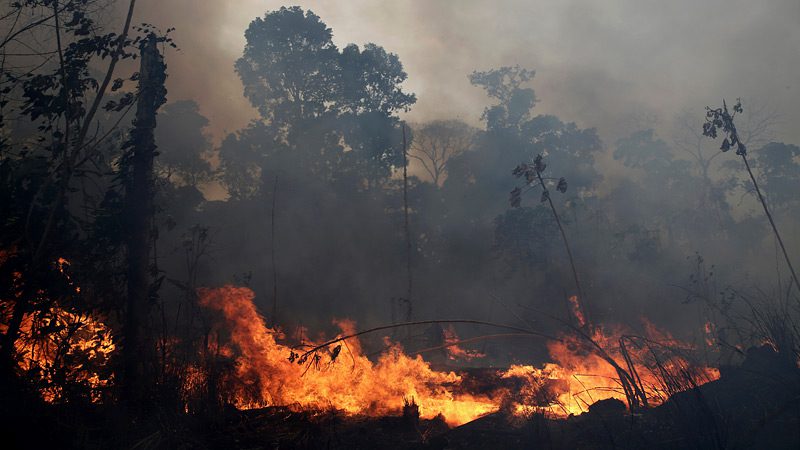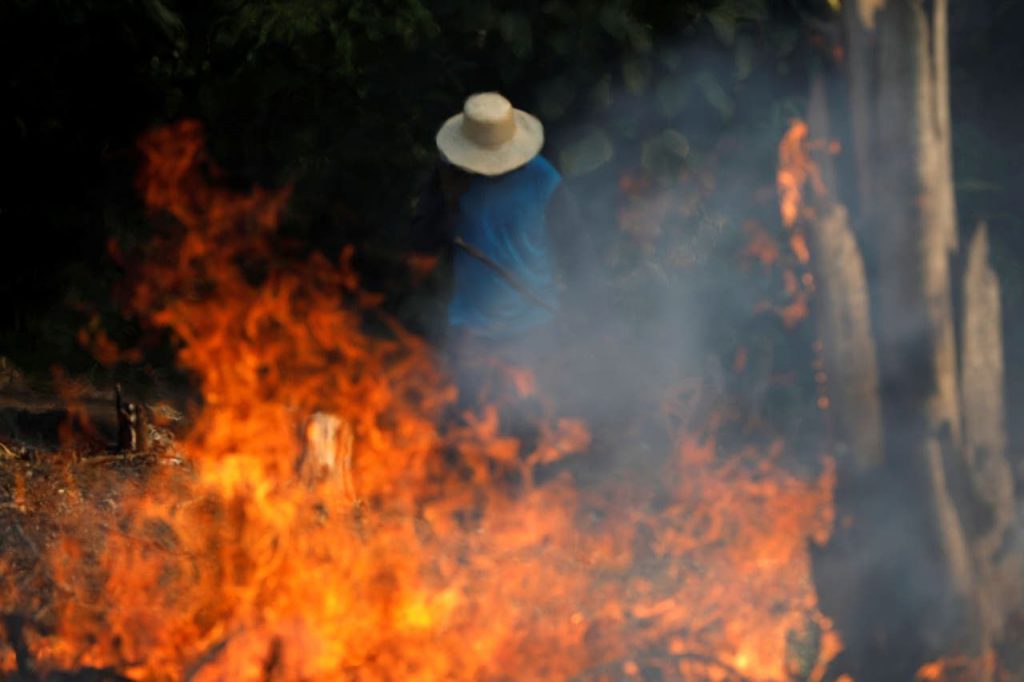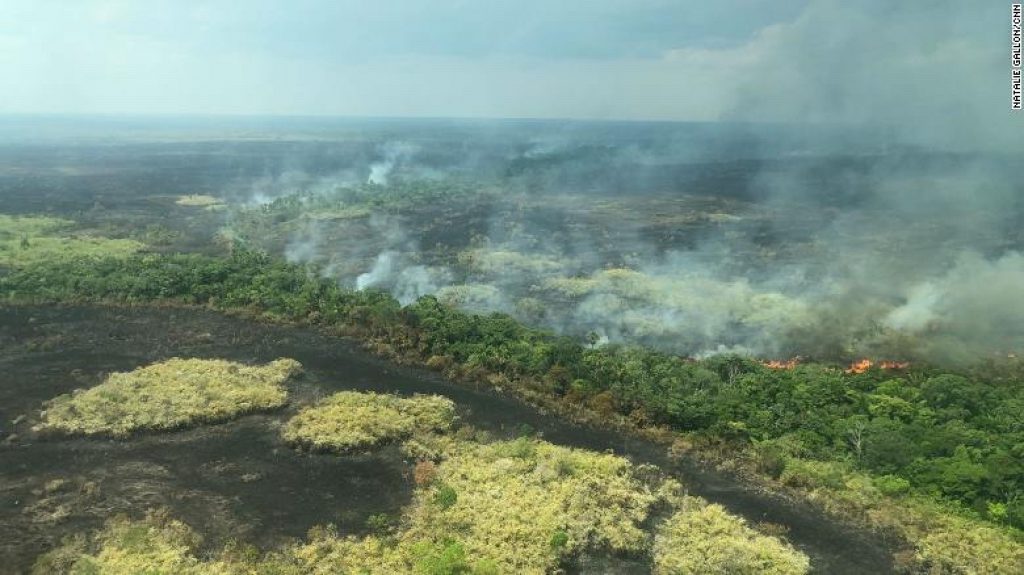What we do not see does not exist. It may be a bit of an exaggeration, but for something it says “see to believe.” The smoke has had to reach Sao Paulo and darken the sky of the city at three in the afternoon on August 20 to believe that the Amazon is burning more than the account in this 2019 season.
But the most serious is not seen. There are many and very important effects of these fires. The consequences are not reduced to the flames and calcined trees that appear in the photos. No one can see an ecological process with the naked eye, just as no one can observe the largest river on the planet without rising high enough.
But the largest river on the planet is actually invisible; It is the river formed by the sum of the columns of water that each Amazonian tree extracts from the ground and transports into the atmosphere. It is another river that is not seen, but its state profoundly influences the health of the planet and our own well-being.
That invisible river is generated thanks to the transpiration of billions of trees. Each of them mobilizes up to a ton of water daily. This phenomenon gives rise to a unique regional climate, prevents the southern region of Brazil, Uruguay, Paraguay and northern Argentina from becoming desert and regulates the entire Earth’s climate.
Vandalism with global consequences

Fires, caused to deforest, are the most rudimentary, destructive and cheap way to break through the forest. They are provoked on a large scale in all the tropical regions of the world, but records have been broken in the Amazon this August.
Although scientific caution suggests that it is still too early to state with certainty, two of these records are unquestionable:
- The number of fire sources, with more than 75,000 (2,500 assets were counted at the time of writing this article).
- The affected area: more than 3,000 square kilometers, triple what has been burned in other years.
And the fire season officially continues until the end of September, so the numbers may increase.
When it comes to finding guilty parties, one can hardly point to an unusually severe drought. This year’s is normal. Rather lazy. The El Niño phenomenon, which is associated with the most important fires in this region, has been weak in 2019. The fact that the outbreaks are located mainly on the periphery of the large forest masses ends up confirming the human origin of the calls.
Burning the forest means not only eliminating trees, but also destroying soil fertility and eliminating thousands of species of animals, plants, fungi and bacteria that fulfill an essential biological function. In fact, all these organisms would improve the yield of the plantations and grazing pastures that could be cultivated after the fire.
Setting fire to all that is an act of vandalism. And like a vandal that destroys street furniture, it runs out of a bench to sit on, those who burn the forest are left without key ecological functions that would allow for higher production and greater resilience to disturbances, whether natural or not.
Given the magnitude of the fires we are talking about and the contribution of the Amazon to the great global cycles, such as carbon, oxygen and water; it is a vandalism of planetary consequences. Not surprisingly, the Amazon produces the fifth part of the oxygen we breathe and captures the fifth part of the CO₂ we emit. A fifth of the world’s freshwater reserves circulate along the Amazon River.
Changes in the forest and weather

Fire, Amazon, climate and CO₂. These four concepts are closely linked. The fires change the Amazon forest and the destruction of this forest changes the weather. Fires emit carbon stored in trees and soil for a long time in the atmosphere, favoring global warming. In addition, the disappearance of trees decreases the ability to sequester carbon by photosynthesis, thereby losing effectiveness in mitigating this global warming.
Deforestation generated by fires causes more radiation to reach the lower layers of the forest. As a consequence, the soil dries, the communities of animals and plants change and less perspiration occurs. This creates a new local climate due to deforestation that changes the forest.
The new forest affected by fires transpires less, moves less water, produces less volatile compounds that favor rain in the atmosphere. With all this, a cycle without control is generated that leads to the advance of the savanna where there were previously forests. This altered forest grows less and therefore fixes less carbon.
There is already evidence that the productivity of the Amazon forest and, therefore, its atmospheric carbon fixation, have been halved in the last thirty years. Several studies show an important advance of the savannah at the expense of the Amazon forest: in the sixties the fifth part of this forest has already been lost. And this 2019 will contribute more than normal to this negative trend.
The Paris Agreement and the 2030 Agenda

The recovery of the Amazon forest is slow and, in certain situations, the passage to the savanna is irreversible. So, even in the best scenario of fire prevention and conservation of existing forests, it will take decades to recover the ecological function that has been lost in recent weeks and, with it, a part of the Amazon’s ability to mitigate the climate change and regulate the regional and planetary climate.
It will be more difficult to comply with the Paris Agreement and the 2030 Agenda of the Sustainable Development Goals. We made the calculations with a CO₂ stored in the Amazon that these fires have already put in the atmosphere. We made the calculations with a large and healthy Amazon forest that was able to capture a lot of CO₂ over the next few years.
Now, you have to redo those calculations. And it will be time to make bobbin lace with our emissions. If we had to reduce them a lot, and it did not seem easy, now we have to reduce them even more if we do not want to go beyond the barrier of the two degrees of warming established as a safety limit in the Paris Agreement. Fulfilling the 2030 Agenda will make us uphill with this colossal fire that devastates an ecosystem that works a little worse every year.
The fire in April of the Parisian cathedral of Notre Dame had us all in suspense. We were so distressed that in a few hours’ donations and all kinds of actions were organized that revealed the power of fire images to raise awareness. The fires in the Amazon are far from us, they look little. In fact, so humid vegetation burns badly and smokes is seen more than fire. But the really worrying thing is everything that these fires threaten. And that is not seen.







